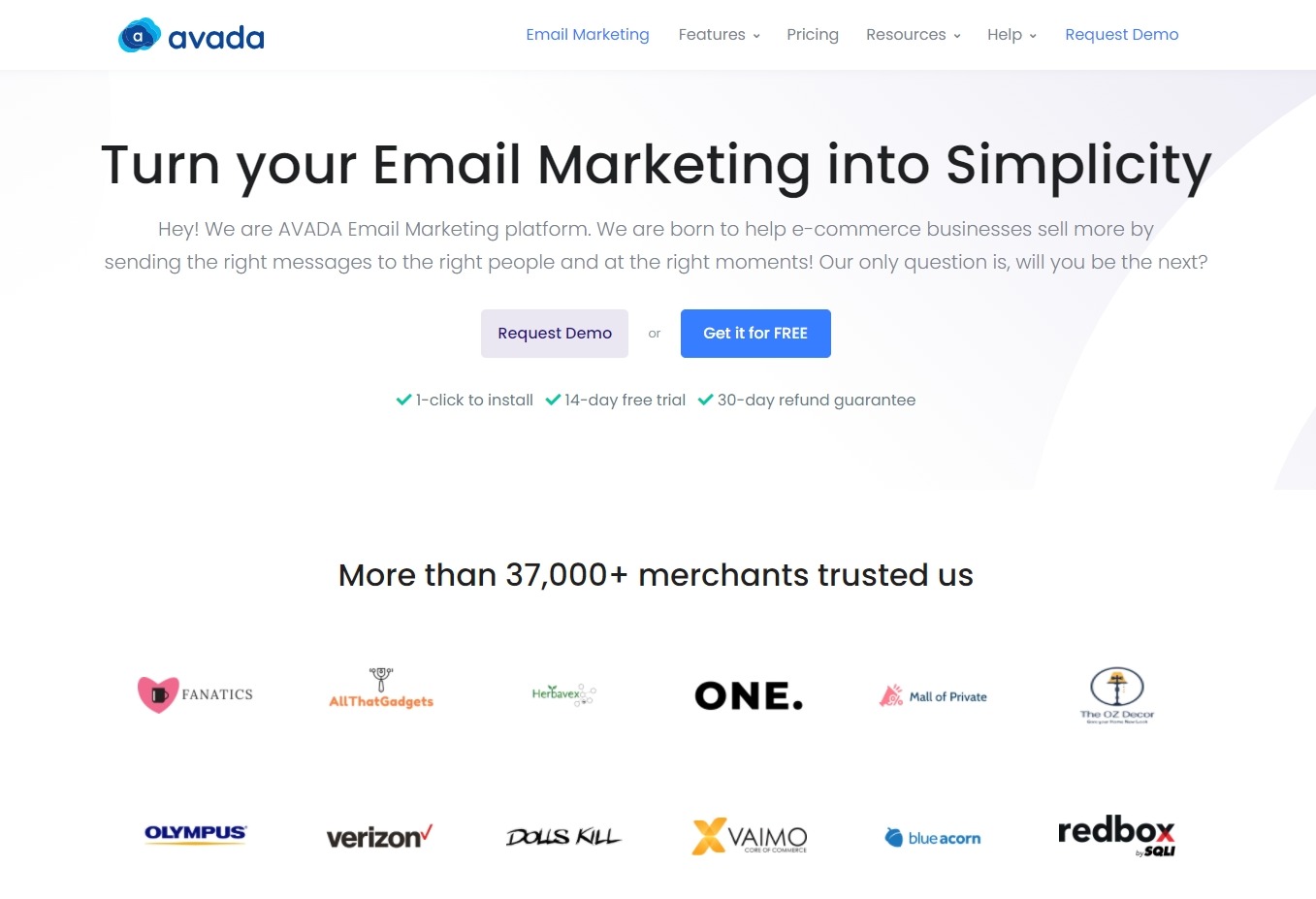Marketing Strategy Definition, Importance, Types & More!
Marketing is dynamic and ever-changing; this is something that we all can recognize. The consumer needs and technology trends shift every day, creating new channels for connection while leaving the ones who can’t adapt behind.
It is a new world on the digital landscape, and you can’t use the old map anymore.
This is why every business out there must have a good marketing strategy with well-defined milestones and objectives. Once you have the right plan, the chances you’ll achieve the goals you’ve set for your business will be much higher.
That means, while most of us are eager to start some kinds of marketing activities the minute after we started a new business, it is actually better to invest in the strategy phase, so we don’t waste our energies and budget on the wrong efforts.
In this article, I will show you the marketing strategy map, unlocking all the necessary knowledge you need to build the ultimate marketing plan for your business. We will go through it step by step so you won’t miss a thing and can well understand the process.
First, let’s start with some of the basic terms for marketing strategy:
Marketing strategy definition

A marketing strategy is a business’s long-term and forward-looking plan to reach a specific marketing-related goal(s) in an achievable and focused way. It takes into consideration what your marketing team is currently doing well and what you may be missing in regards to the objectives you set so you have a better chance to accomplish it.
A well-made marketing strategy would contain the company’s value proposition, key brand messages, data on target customer demographics, and other high-level marketing elements. Ideally, a thorough marketing strategy can cover the “four Ps” of marketing: product, place, price, and promotion.
A marketing strategy considers all aspects of the customer journey and gives visibility to each phase. This then allows the company to focus on the resources available and figure out a way to use them to the best marketing approach to generate sales and increase the advantage edge on the market.
In general, the marketing strategy would be the main idea of how a brand communicates with consumers about what the business stands for, how it operates, and why it deserves their attention. This provides a template that should help consumers recognize the brand across all of the products and services.
For example, Walmart is widely known by many as a retailer with “everyday low prices,” which is the result of their business operations and marketing efforts rooting in the idea. Now, whenever someone goes to Walmart, they can expect discounts and products with prices lower than anywhere else.
The important of marketing strategy
In an environment that is used to frequent and unpredictable changes, you might wonder why you have to focus so much energy on building a long-term strategy that is likely to need adjustments anyway?
You may think your company isn’t a global powerhouse. You might not even think of achieving that kind of growth, and, realistically, most companies won’t join the Fortune 500 — even though the world’s biggest brands still need to adjust their marketing strategy.
That doesn’t mean making a real investment in marketing strategy isn’t for you. Suppose you have customers and audiences to serve. In that case, you should think strategically so your marketing execution - which actually moves the consumers to your brand and drives the results you need.
Here are two key statistics to prove the impartiality of a marketing strategy:
Marketers who document their strategy and effort are more likely to reach their goals. The strategy will help you direct the advertising dollars to where they matter the most. The phrase “you need a documented strategy” has been repeated around the industry for decades. In fact, research from CoSchedule in 2019 proved that marketers who document their strategy were 313% more likely to report their marketing campaigns successfully.
According to research published by the folks at Content Marketing Institute, only 41% of marketers documented their content strategy in 2020. This means there are tons of opportunities to create content that your competitors probably aren’t making.
String these two statistics together and you can draw a few conclusions:
-
Documenting strategy is important: If you do it effectively, you will see great marketing results.
-
Many marketers are not doing it though: Which means you have more opportunities.
-
Success is offered to those who follow through: Marketers who are willing to create a marketing strategy will see the door wide open.
So, a marketing strategy is not a worthless document that you leave with dust on the top shelf. It’s a vital process to discover your business’s ultimate marketing goals, objectives, and ways to achieve them. Your marketing strategy will become a blueprint for everything you do to promote your product or service better.
Types of marketing strategies

We can apply marketing strategies to different types of channels and platforms. Here are some other areas where you can apply your marketing strategy to different methods of engaging with customers:
-
Email Marketing Strategy: Email is a cost-effective and powerful channel so having a plan is essential.
-
Social Media Marketing Strategy: You can encompass both paid and organic social strategies across social media platforms.
-
Inbound Marketing Strategy: Inbound strategies aim to pull customers in — but rather than using disruptive tactics like traditional advertising, you use contextual marketing to attract only people who already have a need for your product.
-
Content Marketing Strategy: Closely related to inbound marketing but more specifically revolve around the creation of content that pulls customers in.
-
Digital Marketing Strategy: This includes all digital marketing (e.g. SEO, pay per click, paid and organic social media, email — which means all things digital).
-
Marketing Communications Strategy: A strategy primarily for your brand messaging.
-
SEO Strategy: Organic searches are one of the best sources of traffic for any website on the Internet. Success in SEO, of course, requires a strategy.
-
Public Relations Strategy: PR strategies can be quite complex, and in addition to customers, companies must consider building relationships with stakeholders and other public organizations like government decision-makers, the media, and other influential entities.
-
Internal Marketing Strategy: If you are a large organization, internal marketing is a must, used for persuading internal stakeholders to support or keep staff informed and understand the company’s mission.
No matter the marketing strategy type you plan to execute, they all follow the same basic principles:
-
Who do you want to reach? These are your target audiences or customers you need to buy your products, make a donation, support an idea, or take other actions that support your objectives.
-
How will you inspire them to act and buy from you? Your branding image, channels, and marketing tactics come into play here.
-
**Where will you try to reach your target audience? **Your networks and channel-specific strategies are valuable in this area.
-
Which ways can you measure success? If you can’t measure your efforts, then they didn’t happen. You must prove that your marketing strategy can drive results.
How to create a marketing strategy?

Technically there is no “correct” way to plan a marketing strategy, but the steps outlined in this guide are a practical and easy-to-follow way to do it. Plus, you don’t have to spend much time figuring things out from scratch. Instead, you can create a marketing strategy quickly then focus on doing the job.
Let’s dive into the critical components to create a complete marketing strategy:
Step 1: Build buyer personas
For any marketing strategy, you need to know the people you are marketing to. The best marketing strategies are built upon specific buyer personas, so your first logical step is to create them.
Buyer personas represent your brand’s ideal customer(s), and you can create them by researching, interviewing, and surveying your company’s target audience.
It’s important to keep in mind that this information should be based upon real and reliable data whenever possible. If you make assumptions about your audience, it can cause your marketing strategy to head in the wrong direction.
To get a complete picture of your buyer persona, your research process should include a mixture of customers, prospects, and even consumers outside your contacts database who are suitable to become your target audience.
But what kind of information do you need to gather for your buyer persona(s) to create your marketing strategy?
That depends on your type of business — and likely to vary depending on whether you’re B2C or B2B, or whether you sell a low-cost or high-cost product.
Here are some starting data that you can collect and tailor to your particular business.
-
Location: what location your website traffic is coming from.
-
Age: Depending on your business, this may be relevant information or not. You should gather this data by identifying trends in your existing customers and prospects, if it is.
-
Income: Sensitive information like personal income should be gathered through personal interviews, as people may not want to share this through an online form.
-
Job title: You can get a rough idea of this from your customer base and often more important for B2B companies.
-
Goals: Depending on what problems your product or service solves, you may figure out the goals of your buyer persona. Speak to real customers and sales representatives or customer service teams to cement your assumptions.
-
Challenges: Same as goals, speak to your customers and sales team to know the common challenges your audience faces.
-
Hobbies/interests: Customers’ and prospects’ hobbies would shape your future products, content, partnerships, and more.
-
Priorities: Find out what customers consider most important to them in doing business with your company. From then, you can upgrade your products and services.
By combining all of the data above, you will be able to create buyer personas that are highly accurate and valuable for your business.
Step 2: Identify your marketing goals
Your marketing strategy goals should always coincide with your business’s fundamental goals.
For example, suppose one of your company’s marketing goals is to increase online revenue by 20% in three months. In that case, your goal should be about generating more leads via the website than in previous months to contribute to achieving your goal.
Other marketing goals might be to attract event attendees or increase brand awareness. You might also want to maintain thought leadership in your company or improve the average customer value. Whatever your goals are, identify what they are and how your marketing efforts can work to achieve them in a specific period.
One more important thing about goals is that you must be able to measure your strategy’s performance along the way by using the right digital marketing tools.
For instance, the AVADA Email Marketing brings all your email marketing data into one dashboard to quickly see which campaigns work and what doesn’t to improve your strategy with email marketing in the future.
Step 3: Select the tools for your marketing strategy

Once you have identified your marketing goals, make sure you have the appropriate tools to measure the success of your marketing efforts.
Online applications like social media schedulers give you analytics to keep track of what your audience engages with and doesn’t. Additionally, you can consider using Google Analytics to measure web page and blog performance.
There are tools that you can use to keep your marketing teams on track or calculate the ranking of your website after a campaign. There are tools that let you analyze data on the webs and compare different metrics of different sites. You have unlimited options for marketing tools and many are free as well.
I recommend only look at tools that can work well with your marketing strategy’s goals since too much information can actually harm your decisions. Keep tools for efficiency and appropriateness, not because they are used by many people.
Step 3: Evaluate your existing resources
Understanding what you already have in your marketing arsenal can help you create your strategy more effectively. You should review your existing marketing channels and assets to determine which to use in your strategy. It’s best to first consider the big picture — which will prevent you from feeling confused or overwhelmed.
Gather what you have, and categorize each resource in a spreadsheet, so you have a clear big picture of your existing media in owned, earned, and paid.
-
Owned media: They are the digital assets that your company owns — whether that’s your social media profiles, websites, blog content, or images. Owned channels are what your business can have complete control over.
-
Paid media: These are vehicles or channels you can spend money on to draw the attention of your buyer personas. Twitter, Facebook, LinkedIn, Google Adwords, and native advertising all offer paid media options that can boost your exposure and visibility.
-
Earned media: This is the exposure your company earns through word-of-mouth marketing. Whether that’s guest blog posts you’ve distributed on other websites or testimonials from customers, earned media is the recognition you receive from others. Shares on social media, photos posted on Instagram, or tweets mentioning your business are all examples of earned media.
Gather the materials you have in these areas and consolidate them all in a single dashboard so you can have a clear vision of what you have and how these three channels can work together to maximize your strategy.
Let’s look at an example:
If you already have a blog that’s producing daily content in your niche (owned media), you can consider promoting your blog articles on Linkedin or Twitter (paid media), which readers might then re-shared (earned media). Ideally, this effort will help you create a better and more well-rounded strategy.
This is how three parts of the framework can work together. So, evaluate the best strategy to help you meet your goal, and then see how these channels can work best for your business and your marketing strategy.
Step 4: Audit and plan your marketing campaigns
Now, you must decide which content will be able to help you. Focus on your media channels and marketing goals.
We will start with owned media.
Owned media
At the heart of owned media always take the form of content. Almost all messages from your brand can be considered content, such as About Us page, blog posts, product descriptions, ebooks, podcasts, infographics, or social media posts.
Content helps convert your online visitors into leads and customers while increasing your company’s online presence. And when your content is search engine optimized (SEO), you can boost your organic and search traffic even more.
Whatever your marketing strategy’s goals are, you’ll want to incorporate owned content. First, let’s decide what type of content will help you reach your goals.
Here’s a brief process you can use to work out what owned content you should have to meet your marketing strategy goals.
-
Audit your existing content: List out your existing owned content, then rank each item according to what has the best performance in relation to your current goals. The idea is to figure out what’s already working, and what’s not, so you can set up for success when planning future content.
-
Identify gaps in your existing content: Identify any gaps in the content you have based on your buyers persona. For example, if you’re a training shoe company and know through research that a big challenge for your buyer personas is finding effective ways to work out - create some content for that.
-
Create a content creation plan: Based on the gaps you’ve identified, create a content creation plan that outlines the content that’s necessary to help you hit your marketing goals. Your content plan should include Title, Format, Promotion channels, Goal, The reason for creation, and Priority level of the content.
You can organize all of the owned media content plans in a spreadsheet and can also include budget information if you want to outsource the content creation process, or a time estimate if you plan to create with your marketing team.
Earned media
Evaluating your previous earned media’s effort against your current goals can help you figure out where to focus your time. Look at where your leads and traffic are coming from and rank earned media sources from least effective to most effective.
You may find a particular guest blog post that drove a lot of quality traffic to your website, which increased conversions. Or, you may discover Instagram is where you see most audience sharing content, which boosted traffic.
The idea is to know what types of earned media can help you reach your goals (and what can’t ) based on historical data. That said, if there’s something you want to experiment with, don’t cross it off just because you’ve never done it before.
Paid media
Again, you need to evaluate your existing paid media performance on each platform (Google AdWords, Twitter, Facebook, etc.) to find out what’s more likely to help you meet your marketing goals.
If you’ve spent a lot of money on Facebook Ads and haven’t seen the results you expect, maybe it’s time to adjust your approach, or scrap it altogether and try another platform that seems to have better results.
By the end of this audit process, you should have a clear picture of which paid media platforms you want to keep using, and which (if any) you want to remove from your strategy.
Step 5: Bring the strategy into action
At this point, your research and planning should help you visualize how your marketing strategy will be executed (and by which teams). The final step is to bring all of your efforts together – to put actions into your strategy.
To review, here’s what you should have achieved so far with your marketing strategy:
-
Profiles of your buyer personas
-
One or more marketing-specific goals
-
An overview of your existing owned paid and earned media
-
An audit of your existing owned paid and earned media
-
A content creation plan for owned media
Now it’s time to bring all of your preparation together to form a complete marketing strategy document. Create a document that can map out the steps you need to take for your campaign. In other words, turn your strategy into actions.
Think long-term when creating your marketing strategy document. A standard strategy documenting the process is 12 months. This structured timeline will be the home base for your marketing efforts.
Remember, your marketing strategy is unique to your company, so the document should be as well. If the marketing strategy includes all of the necessary information, you will be fully equipped to take your brand from okay to outstanding.
Marketing strategy’s FAQs
**Q. What is the difference between a marketing strategy and a tactic? **
Marketing strategies are broader than marketing tactics. Tactics are definable steps within your marketing strategy that ensure you can reach your objectives.** For example**, your business can have a strategy for social media channels, and then you can also have specific tactics to execute for each channel.
The correct order is: Marketing strategy => Digital marketing strategy => Marketing tactics
Q. What does a marketing strategy look like?
A marketing strategy will include all details about advertising, outreach, and campaigns to be carried out by the marketing team, including how a company will measure the effect of the marketing efforts.
Q. Is a marketing plan the same as a marketing strategy?
The terms marketing strategy and marketing plan are often used interchangeably because the marketing plan is often developed based on a strategic framework. In some cases, the plan and the strategy may be incorporated into one single document, particularly for small companies that only run one or two big campaigns in a year.
The plan helps outline marketing activities on a timely basis while the marketing strategy defines the overall value proposition.
Q. What do 4 Ps mean in a marketing strategy?
The 4 Ps are product, promotion, price, and place. These are the key factors that exist in the marketing aspect of a good or service. The 4 Ps are used when evaluating an existing offer, planning a new business venture, or trying to optimize sales. It can also be used to test a marketing strategy on new audiences.
Q. What is digital marketing strategy?
A digital marketing strategy aims to let your business achieve specific digital goals with tactics for carefully selected online marketing channels like earned, paid, and owned media.
Q. What is a digital marketing campaign?
Digital marketing campaigns are the plans and actions within your digital marketing strategy that help move your brand toward a specific end goal.
For example, if the goal of your digital marketing strategy is to generate more buyers through social media, you can run a digital marketing campaign on Facebook. You can share some of your business’s best-performing content on Facebook to generate more leads through the channel.
Use marketing strategy to put your brand on the map
Your marketing strategy will be very individual to your brand, which is why it’s almost impossible to create a one-size-fits-all marketing strategy template. It will take time, dedication, and a lot of hard work to ensure you’re reaching your target audience whenever and wherever they want to engage.
Remember, the purpose of your marketing strategy is to map out the actions you will take to achieve your marketing goals over some time — as long as it can do that, then you’ve hit the X spot to find the gold mine for your business with the marketing strategy.
If you need more resources for a marketing strategy or tactic to help grow your business, check out other articles on the AVADA blog!
New Posts






